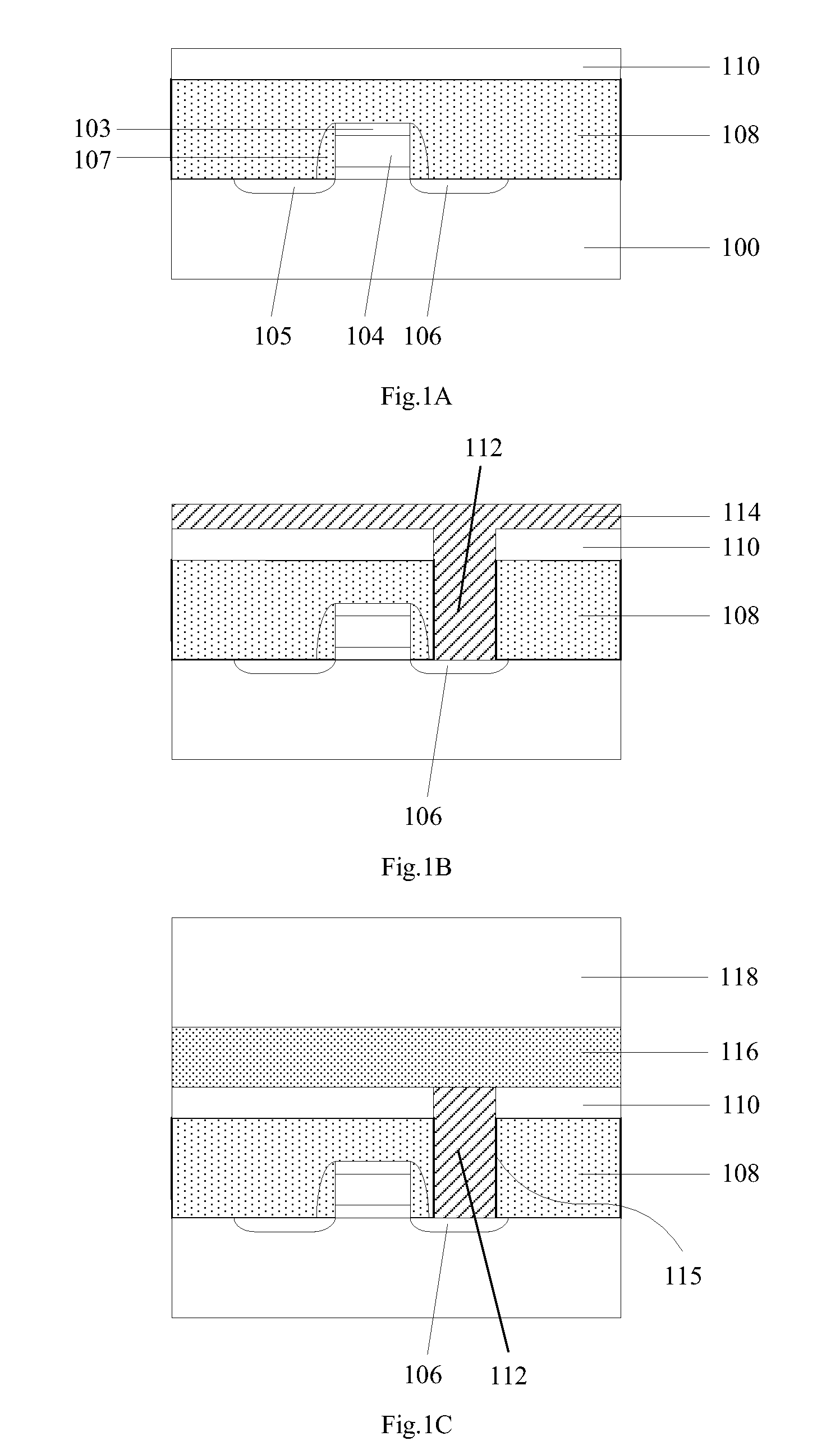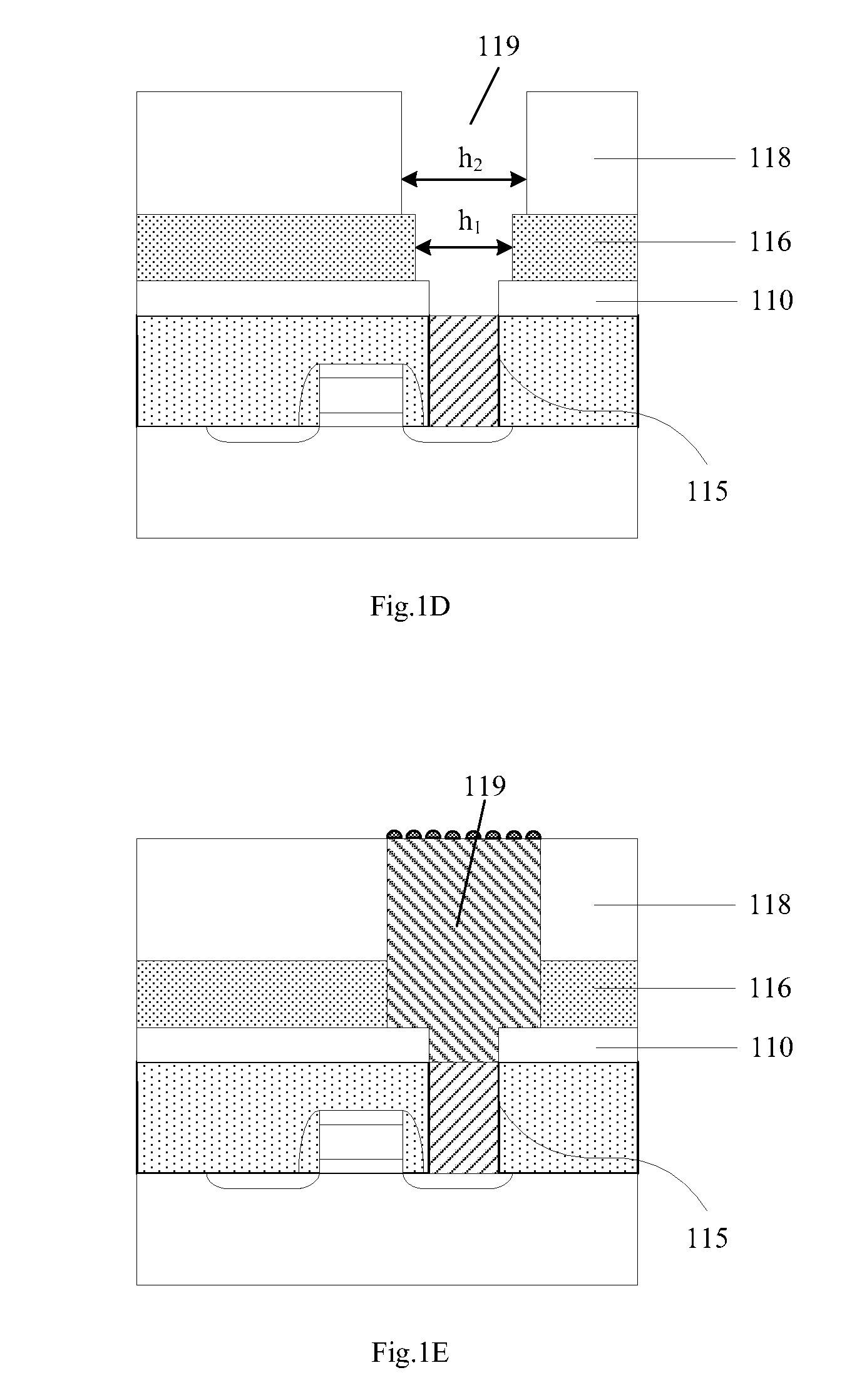Method for avoiding polysilicon defect
- Summary
- Abstract
- Description
- Claims
- Application Information
AI Technical Summary
Benefits of technology
Problems solved by technology
Method used
Image
Examples
Embodiment Construction
[0035]In the formation of a polysilicon layer during the fabrication of a capacitor in a dynamic random access memory in the prior art, the first interlayer dielectric layer is made of TEOS, and the second interlayer dielectric layer is made of BPSG; the dry etching gas has different etching rates for TEOS and BPSG; consequently, the opening width of the first interlayer dielectric layer and that of the second interlayer dielectric layer are different. Therefore, the HSC1 is required to etch the opening width of the first interlayer dielectric layer and that of the second interlayer dielectric layer to be equal to each other. However, the HSC1 may react with the polysilicon plug, and a defect may occur in the polysilicon plug, resulting in an electric failure. Furthermore, when the HSC1 and the BOE are used to etch the interlayer dielectric layers, there may be a residual of the silicon nitride layer due to the fact that HSC1 and the BOE are unable to etch the silicon nitride layer,...
PUM
 Login to View More
Login to View More Abstract
Description
Claims
Application Information
 Login to View More
Login to View More - R&D
- Intellectual Property
- Life Sciences
- Materials
- Tech Scout
- Unparalleled Data Quality
- Higher Quality Content
- 60% Fewer Hallucinations
Browse by: Latest US Patents, China's latest patents, Technical Efficacy Thesaurus, Application Domain, Technology Topic, Popular Technical Reports.
© 2025 PatSnap. All rights reserved.Legal|Privacy policy|Modern Slavery Act Transparency Statement|Sitemap|About US| Contact US: help@patsnap.com



